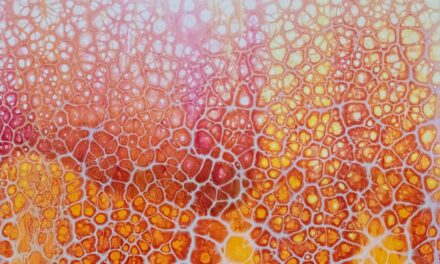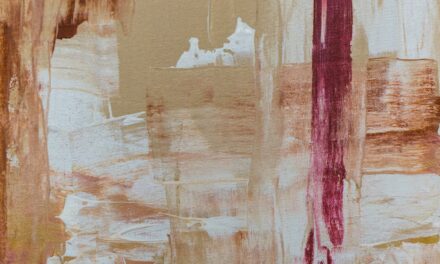The art of glassblowing has a rich and intricate history that dates back to the first century BC, with its origins believed to be in the regions of the Eastern Mediterranean, particularly in Syria. The technique emerged as a revolutionary method for shaping glass, allowing artisans to create forms that were previously unattainable through traditional glass-making methods, such as casting or moulding. The earliest known glassblowers were likely skilled craftsmen who discovered that by blowing air into molten glass, they could produce hollow shapes.
This innovation not only expanded the possibilities of glass design but also made glass more accessible and affordable, leading to its widespread use in everyday objects. As the technique spread throughout the Roman Empire, glassblowing evolved significantly. By the first century AD, glassblowing workshops were established in major cities such as Alexandria and Rome, where artisans honed their skills and developed new styles.
The Romans were particularly fond of glassware, and their demand for decorative and functional pieces spurred advancements in the craft. The introduction of colour and intricate designs became prevalent during this period, with artisans experimenting with various additives to create vibrant hues. The fall of the Roman Empire saw a decline in glassblowing techniques in Europe, but the craft continued to flourish in the Islamic world, where it was further refined and preserved.
Summary
- Glassblowing dates back to the 1st century BC in the Roman Empire, and has since evolved into a popular art form.
- The tools and materials used in glassblowing include a blowpipe, marver, and furnace, along with molten glass and various shaping tools.
- The process of glassblowing involves gathering molten glass on the end of a blowpipe, shaping and blowing the glass into the desired form, and then annealing it to cool and strengthen the glass.
- Different types of glassblowing techniques include free blowing, mold blowing, and lampworking, each producing unique results.
- Glassblowing plays a significant role in art and design, with glassblowers creating intricate sculptures, functional glassware, and architectural installations.
The Tools and Materials Used in Glassblowing
The Essential Materials of Glassblowing
Glassblowing necessitates a specific set of tools and materials that are essential for shaping and manipulating molten glass. The primary material used is silica sand, which is the main ingredient in glass production. When combined with soda ash and lime, silica sand melts at high temperatures to form a viscous liquid that can be shaped.
Adding Colour and Effects
Other materials, such as metal oxides, are often added to create various colours and effects in the finished product. For instance, cobalt oxide produces a deep blue hue, while iron oxide can yield green or amber shades.
The Tools of the Trade
The tools employed in glassblowing are equally important and are designed to withstand the extreme heat involved in the process. The blowpipe is perhaps the most iconic tool; it is a long metal tube through which the artisan blows air into the molten glass to create a bubble. Other essential tools include punty rods, which are used to hold and manipulate the glass while it cools, and jacks, which are used for shaping and controlling the form of the glass. Additionally, shears and paddles help refine the shape and thickness of the glass, while torches may be used for reheating specific areas during the crafting process.
Precision and Creativity
Each tool plays a vital role in ensuring precision and creativity in glassblowing.
The Process of Glassblowing

The process of glassblowing is both an art and a science, requiring skillful manipulation of materials at high temperatures. It begins with gathering molten glass from a furnace, where silica sand has been heated to around 1,700 degrees Celsius. The artisan uses a blowpipe to gather a glob of molten glass from the furnace.
This initial gathering is crucial as it determines the size and volume of the final piece. Once the glob is collected, it is essential to keep it at a workable temperature by periodically reheating it in a glory hole—a chamber that maintains high temperatures. After gathering the molten glass, the artisan begins to blow into the blowpipe, creating a bubble within the glass.
This step requires careful control of airflow; too much pressure can cause the bubble to burst, while too little will result in an underdeveloped form. As the bubble expands, the artisan can manipulate its shape using various tools. For instance, they may use paddles to flatten or shape the bubble into a disc or use jacks to create a neck for a vase or bottle.
Throughout this process, constant reheating is necessary to maintain malleability, allowing for intricate designs and forms to emerge.
Different Types of Glassblowing Techniques
Within the realm of glassblowing, several distinct techniques have developed over centuries, each offering unique aesthetic qualities and functional capabilities. One prominent technique is free-blowing, where artisans shape molten glass solely through blowing and manual manipulation without relying on moulds. This method allows for organic forms and individual expression, resulting in one-of-a-kind pieces that reflect the artisan’s creativity.
Another significant technique is mould-blowing, which involves blowing molten glass into pre-formed moulds to achieve specific shapes and designs. This method is particularly useful for producing uniform items such as bottles or bowls. Mould-blowing can also incorporate intricate patterns or textures that would be challenging to achieve through free-blowing alone.
Additionally, there are techniques like marvering—where molten glass is rolled on a smooth surface to shape it—and casting, which involves pouring molten glass into a mould to create solid forms.
The Role of Glassblowing in Art and Design
Glassblowing occupies a unique position at the intersection of art and design, serving both functional and aesthetic purposes. Artists have long embraced glass as a medium for creative expression due to its versatility and ability to capture light in captivating ways. Contemporary glass artists often push the boundaries of traditional techniques, experimenting with colour, texture, and form to create striking sculptures that challenge perceptions of glass as merely a utilitarian material.
In addition to fine art, glassblowing plays a significant role in design disciplines such as architecture and interior design. Architectural glass installations can transform spaces by introducing elements of transparency and lightness while providing functional benefits like insulation or soundproofing. Designers often collaborate with skilled glassblowers to create bespoke pieces that enhance their projects, whether it be custom lighting fixtures or decorative installations that serve as focal points within a room.
Famous Glassblowers and Their Work

Mastering Colour and Light
One notable figure is Dale Chihuly, a renowned American artist celebrated for his large-scale installations that blend colour and form in breathtaking ways. Chihuly’s work often features intricate chandeliers made from thousands of hand-blown glass pieces, showcasing his mastery of colour and light manipulation.
Elevating Glass Art to New Heights
His installations can be found in museums and public spaces worldwide, elevating glass art to new heights. Another influential artist is Lino Tagliapietra, an Italian maestro who has been instrumental in bridging traditional Venetian techniques with contemporary art practices.
A Legacy of Craftsmanship and Innovation
Tagliapietra’s work reflects a deep respect for craftsmanship while embracing modern aesthetics. His pieces often feature complex patterns and vibrant colours that highlight his technical prowess and artistic vision. Through his teaching and mentorship, Tagliapietra has inspired countless aspiring glass artists around the globe.
Safety Precautions and Considerations in Glassblowing
Engaging in glassblowing necessitates strict adherence to safety protocols due to the inherent risks associated with working with high temperatures and molten materials. One of the primary concerns is thermal burns; therefore, wearing appropriate protective gear is essential. This includes heat-resistant gloves, safety goggles to protect against flying shards or splashes of molten glass, and flame-resistant clothing that covers exposed skin.
Proper ventilation is also crucial when working with glassblowing equipment since fumes from heated materials can be harmful if inhaled over prolonged periods. Artisans should ensure that their workspace is well-ventilated or equipped with fume extraction systems to mitigate these risks. Additionally, maintaining a clean workspace free from clutter can prevent accidents caused by tripping or knocking over equipment during the intense focus required for glassblowing.
The Future of Glassblowing as an Art Form
As we look towards the future of glassblowing as an art form, it is evident that innovation will continue to play a pivotal role in its evolution. With advancements in technology, such as 3D printing and digital fabrication techniques, artists are beginning to explore new possibilities for integrating traditional glassblowing methods with modern technologies. This fusion could lead to entirely new forms of expression that challenge conventional boundaries within the medium.
Moreover, sustainability is becoming increasingly important within the art world, including glassblowing practices. Artists are exploring eco-friendly materials and methods that reduce waste while maintaining high-quality craftsmanship. The use of recycled glass not only contributes to environmental conservation but also adds unique character to each piece created from repurposed materials.
As artists continue to push creative boundaries while addressing contemporary issues such as sustainability, the future of glassblowing promises to be dynamic and inspiring.
For those intrigued by the fascinating world of glassblowing and keen to explore more unique art forms, delving into the realm of Op Art could be equally captivating. Op Art, or Optical Art, manipulates visual perception through abstract patterns and vibrant contrasts, creating illusions of movement and depth. This art form, which emerged during the mid-20th century, shares a similar spirit of innovation and sensory engagement with glassblowing. To learn more about Op Art and its mesmerising effects, you might find the article “An Introduction to Op Art” particularly enlightening. You can read further about it here.




